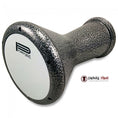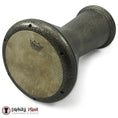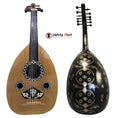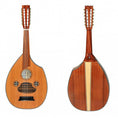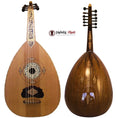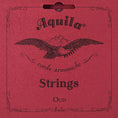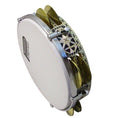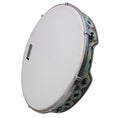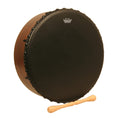- No products in the cart.
Floating Bridge Iraqi Arabic Oud
21
Aug
The Iraqi Arabic Oud is the king of all instruments in the Arab heritage. It is assumed that the term al-oud has been derived from the Arabic word for "wood." This instrument was introduced in Europe via North Africa. Undoubtedly, Oud is one of the oldest musical instruments in Arab culture and an integral part of Middle Eastern music.
On the other hand, Iraq is rich in culture, and music is one of the most prominent cultures. Munir Bashir, Nasser Shamma (often referred to as "The King of Oud"), and Ahmed Mukhtar are the most renowned oud musicians in Iraq. In Iraq, pop, rock, soul, and urban contemporary are just a few modern musical genres. Among all the other traditional musical instruments played in Iraq, the Oud is one of the most well-known traditional instruments.
The Iraqi Oud is quite similar to any other traditional Oud that exhibits a lute-like stringed instrument with a pear-shaped body, a short neck, and varying string lengths. During the Mesopotamian era, the Oud had only three strings, a design that was far simpler than modern instruments. However, the musical instrument evolved to that we recognize today over time.
Specific Attributes of Oud
Its sound vibrates within the hollow body of the Oud and consists of a rounded back enclosed by a soundboard, a flat sheet of wood, while the back comprises 15 to 25 wood strips. Typically, the open side of the back is called the rosette.
The primary distinguishing characteristics of this musical instrument are its pear-shaped body and fretless neck. In contrast, the body of this instrument has one to three sound holes and is typically ornamented with purfling.
An oud's body is composed of an intricate structure of thin wooden blocks, and the upper part of this instrument is made from lightwood.
Among the distinguishing characteristics of this instrument are the following:
- This instrument has twelve strings.
- The peg box is curved back at 45 to 90 degrees.
- This instrument often has one to three oval or circular sound holes.
- The back of the Oud's body is slender and bowl-shaped.
- These are undoubtedly some essential characteristics of this magnificent musical instrument, the Oud.
What makes the floating bridge Iraqi Oud so unique?
The floating bridge Iraqi Oud delivers more open tones, and the total sound of the instrument can resonate without interference. Since it is normal for wood to vary over time as the relative humidity in the atmosphere fluctuates, a floating bridge helps adjust the string tension required for the Oud. Due to variations in the wood, the distance between the strings and the fingerboard can shift somewhat over time. The best part of using a floating bridge Oud is the ease of adjustment features that require no prior technical knowledge.
What makes our product so unique?

Uniquely designed Oud in the style of the Iraqis comes with a floating bridge and is made from locally sourced walnut wood of the highest quality. There's no doubt that the Iraqi Oud with a floating bridge delivers a crisp sound that makes it one of the best-recommended instruments.
With the rising popularity of floating bridge ouds, these F-F tuning Oud produces a bright, polished tone that stands out. Built with superior walnut wood and exquisite craftsmanship, this could be the instrument you're looking for if you want to explore the floating bridge's sounds.
Key features of the floating bridge Iraqi Oud:
- Mahogany neck
- Walnut Fingerboard
- Bridge walnut
- Nut Ebony
- 12 strings
- Glossy finish back design
- Floating bridge
- Ebony Pegs
Listen to the crisp sound that a Floating Bridge Iraqi Oud creates:









